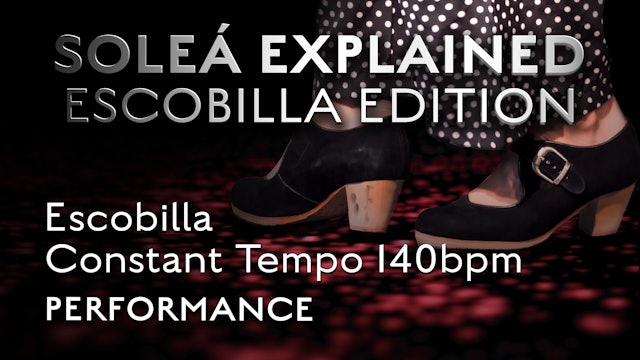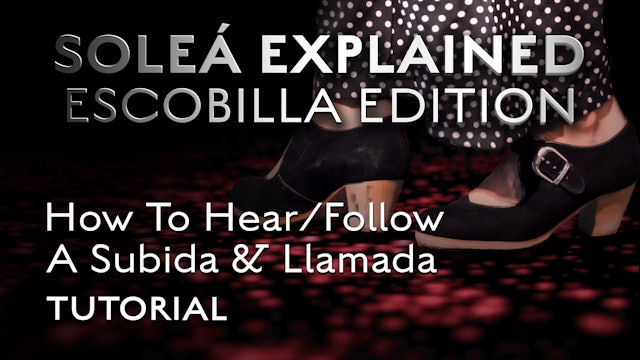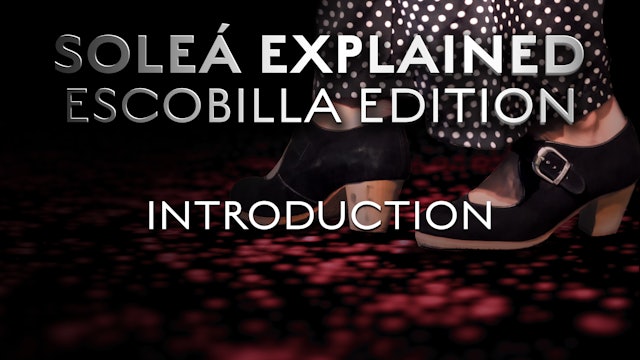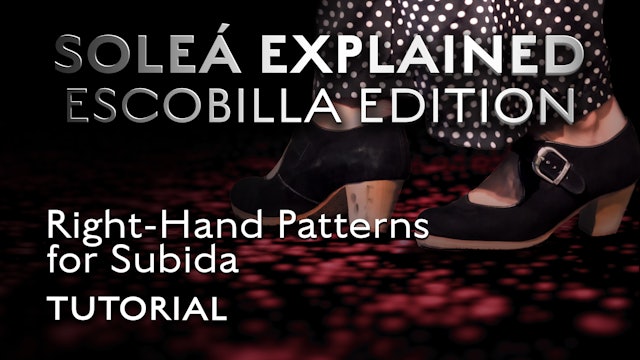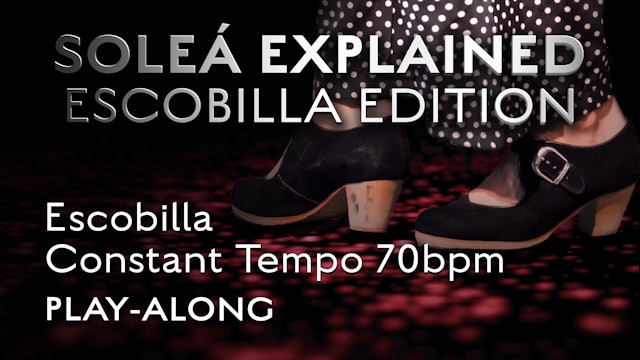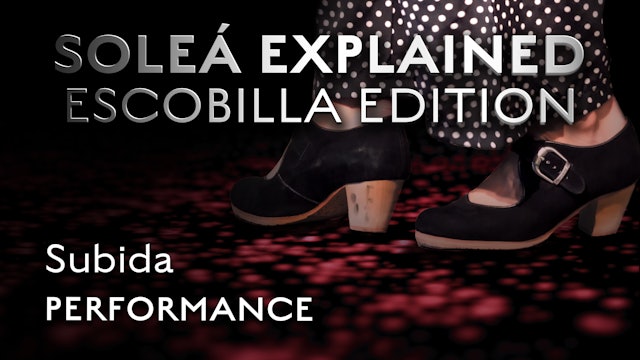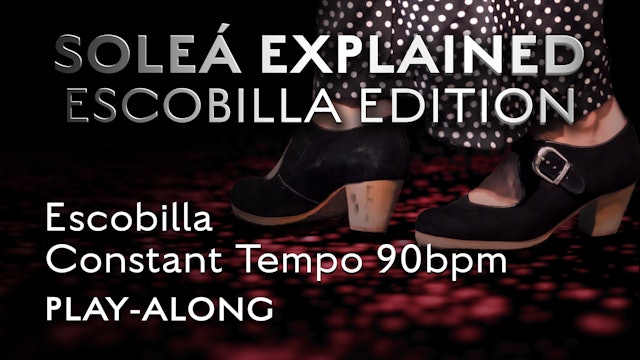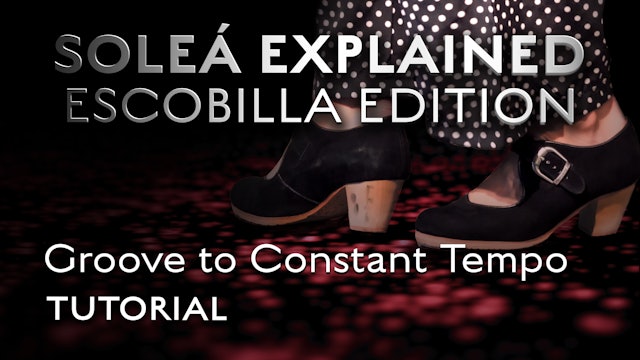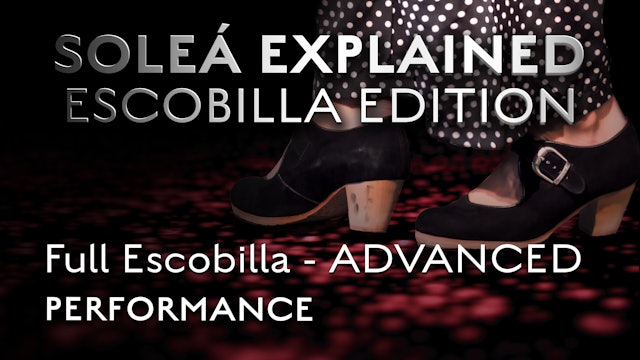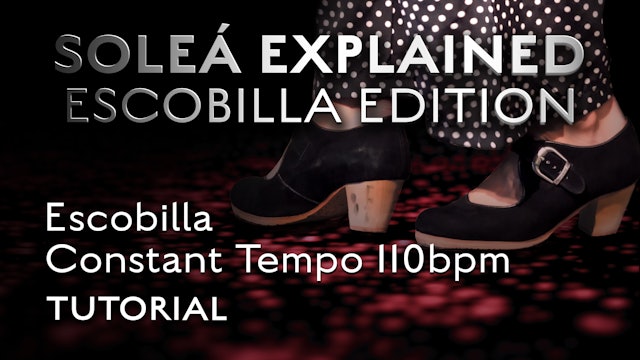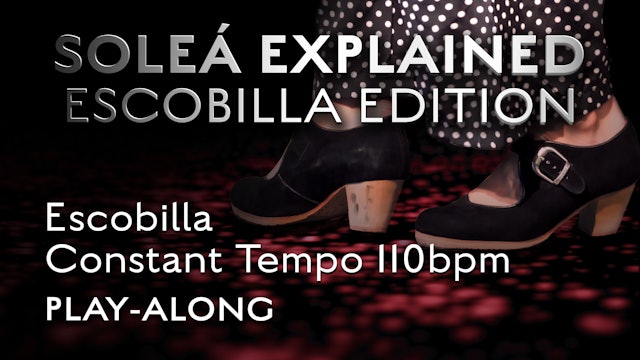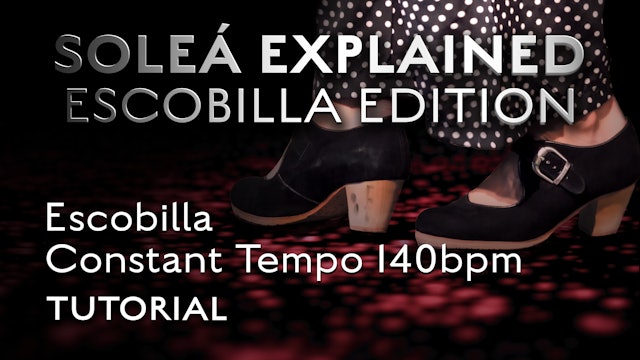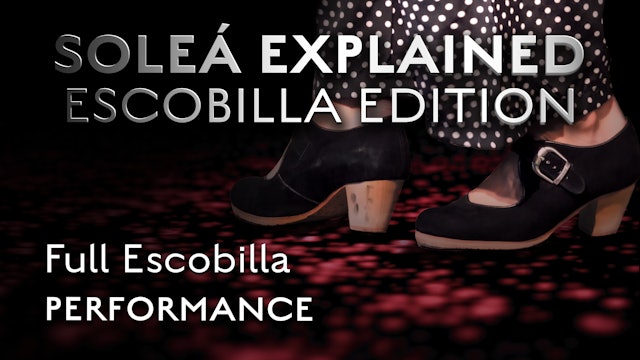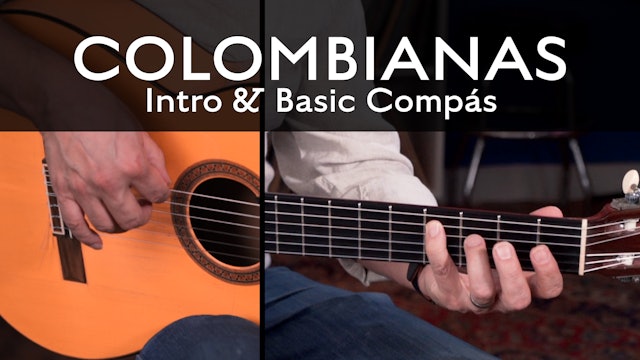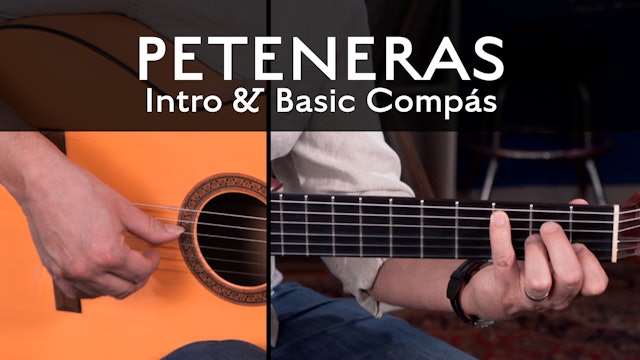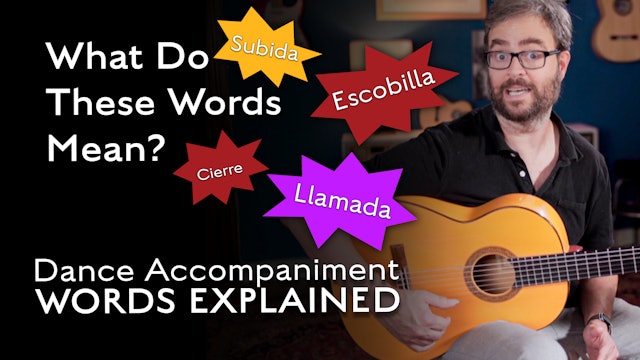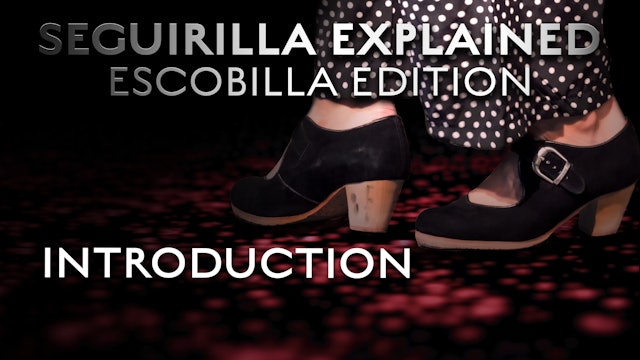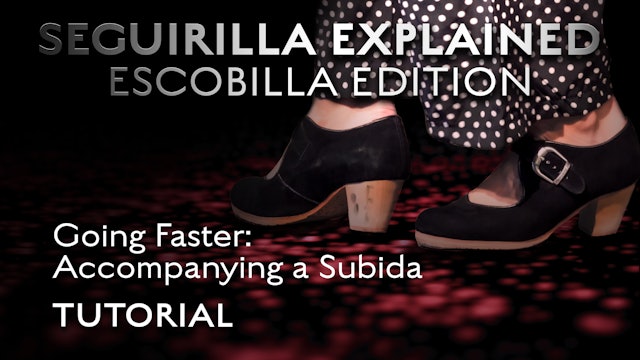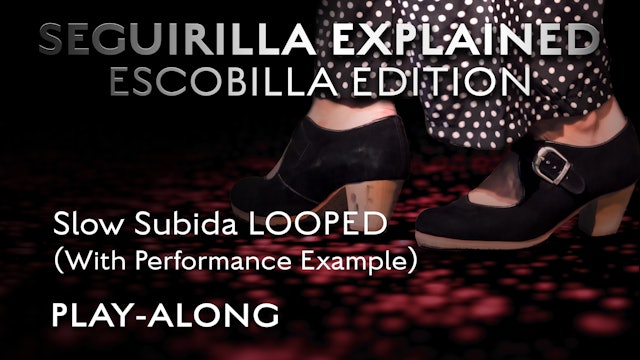Most Recent Videos
Here you'll find all of our videos in the order that we released them. This is not the order in which we recommend you study them, but rather a simple way to see when we added which videos chronologically.
-
Soleá Explained Escobilla Edition - Constant Tempo 140bpm - PERFORMANCE
A performance of some Escobilla por Soleá at a constant tempo of 140bpm. The idea is not for you to learn this particular accompaniment, but rather for you to see how the basic material and all of the right-hand patterns can be manipulated to work when accompanying at a faster tempo like this.
-
Soleá Explained Escobilla Edition-How To Hear/Follow a Subida & Llamada-TUTORIAL
What to listen for as things speed up in the Subida so that you're always in control of the tempo and the pulse - both of which are necessary to accompany the Subida.
-
Soleá Explained Escobilla Edition - Introduction
A little bit about what's in the Soleá Explained Escobilla Edition course and why it's good for you even if you're not accompanying dance yet (or don't plan to).
-
Soleá Explained Escobilla Edition - Right-Hand Patterns For Subida- TUTORIAL
We look at some of the essential right-hand patterns for accompanying Soleá, especially when playin double-time or faster sections of the Escobilla.
-
Soleá Explained Escobilla Edition - Constant Tempo 180bpm - PERFORMANCE
A performance of some fast Escobilla por Soleá at a constant tempo of 180bpm. The idea is not for you to learn this particular accompaniment, but rather for you to see how the basic material and all of the right-hand patterns can be manipulated to work when accompanying at a tempo like this.
-
Soleá Explained Escobilla Edition - How To Play A Fast Escobilla- TUTORIAL
We look at some of the ways to accompany when things get faster or go double-time (which feels faster, or even like a Buleria, even when the actual tempo is slow).
-
Soleá Explained Escobilla Edition - Constant Tempo 70bpm - PLAY-ALONG
-
Soleá Explained Escobilla Edition - Subida - PERFORMANCE
Kai's performance of a Subida from a Soleá Escobilla. The idea isn't to learn what Kai plays here, but to see how you can use the basic Soleá material and the right-hand patterns we've looked at to keep up as things speed up.
-
Soleá Explained Escobilla Edition - Constant Tempo 90bpm - PLAY-ALONG
A loop of some Escobilla at the constant tempo of 90bpm for you to accompany. Get used to playing your basic material straight and syncopated, and to switching among the various patterns you know while keeping time with the dancer.
-
Soleá Explained Escobilla Edition - Groove to Constant Tempo - TUTORIAL
-
Soleá Explained Escobilla Edition - Constant Tempo 140bpm - PLAY-ALONG
A loop of some Escobilla at the constant tempo of 140bpm for you to accompany. Get used to playing your basic material straight and syncopated, and to switching among the various patterns you know while keeping time with the dancer.
-
Soleá Explained Escobilla Edition - Full Escobilla - Advanced - PERFORMANCE
A slightly more advanced/syncopated version of the accompaniment of a full Escobilla por Soleá. The idea is not for you to learn this particular accompaniment, but rather for you to see how the basic material and all of the right-hand patterns can be manipulated and syncopated to work with variou...
-
Soleá Explained Escobilla Edition - Constant Tempo 110 bpm - TUTORIAL
We look at some of ways you can use the basic material and right-hand patterns to accompany an Escobilla por Soleá at the slightly quicker tempo of 110bpm.
-
Soleá Explained Escobilla Edition - Constant Tempos 110bpm - PLAY-ALONG
A loop of some Escobilla at the constant tempo of 110bpm for you to accompany. Get used to playing your basic material straight and syncopated, and to switching among the various patterns you know while keeping time with the dancer.
-
Soleá Explained Escobilla Edition - Constant Tempo 180 bpm -TUTORIAL
We look at some of ways you can use the basic material to accompany an Escobilla por Soleá when things speed up to a quick tempo of 180bpm.
-
Soleá Explained Escobilla Edition - Constant Tempo 90 bpm - TUTORIAL
We look at some of ways you can use the basic material to accompany an Escobilla por Soleá at a moderate tempo of 90bpm.
-
Soleá Explained Escobilla Edition - Constant Tempo 140 bpm - TUTORIAL
We look at some of ways you can use the basic material to accompany an Escobilla por Soleá as things start speeding up to a tempo of 140bpm.
-
Soleá Explained Escobilla Edition - Full Escobilla - PERFORMANCE
Performance of a full Escobilla por Soleá. The idea is not for you to learn this particular accompaniment, but rather for you to see how the basic material and all of the right-hand patterns can be manipulated and work with various footwork patterns and tempos.
-
Colombianas Intro & Basic Compás - TUTORIAL
Introduction to the Colombianas Palo and tutorial on playing variations of the basic compás.
-
PETENERAS Intro & Basic Compás - TUTORIAL
Introduction and basic compás patterns for the Palo Peteneras, a 12-beat compás that is traditionally played Por Arriba. TAB/Notation for this can be found here: https://flamencoexplained.com/tabs-and-notation/
-
What Do These Words Mean? Dance Accompaniment Words Explained
Really important words to know about when accompanying dance including escobilla, subida, cierre and llamada.
-
Seguirillas Explained - Escobilla Edition - INTRODUCTION
New Course Coming September 1st - Watch Intro Now. Welcome to Seguirillas Explained - Escobilla Edition, a course that features tutorials and Play-Alongs to teach you what you need to know to accompany the Escobilla section of a danced Seguirillas.
-
Going Faster: Accompanying a Subida - TUTORIAL
The Subida is when the dancer starts going faster, and in this video we look at how to hear that so that you're always in compás and we look at some right-hand patterns for going fast.
-
Slow Subida Looped with Performance Example - PLAY-ALONG
A performance followed by a Play-Along loop of a Subida in an Escobilla por Seguirillas. This is the slower of our two Play-Along Subidas.

